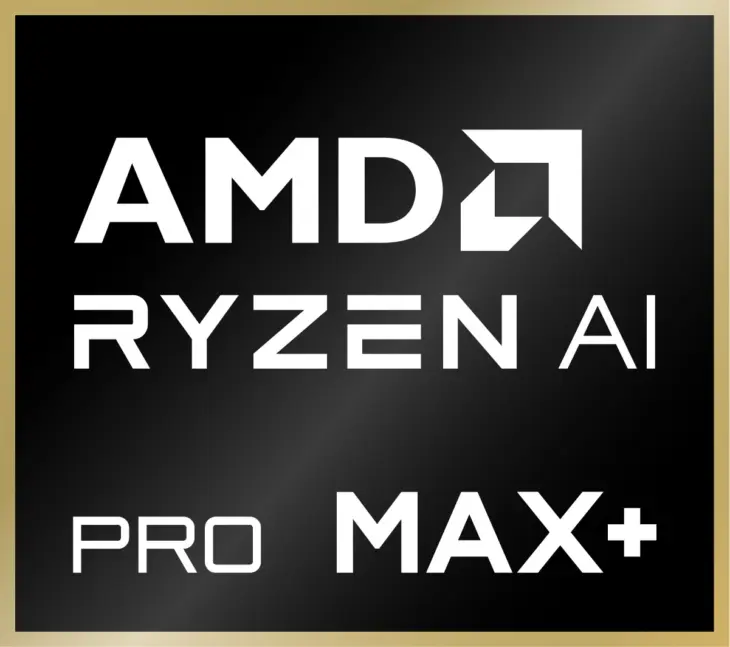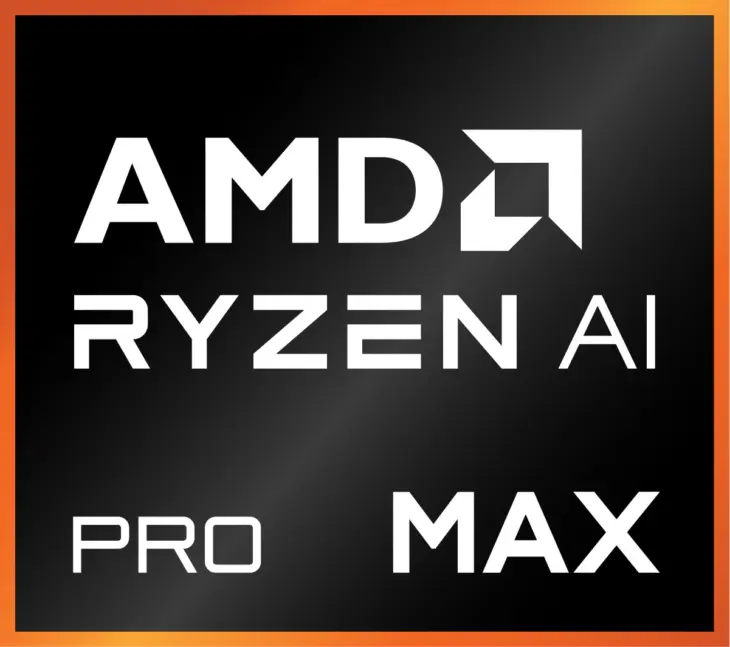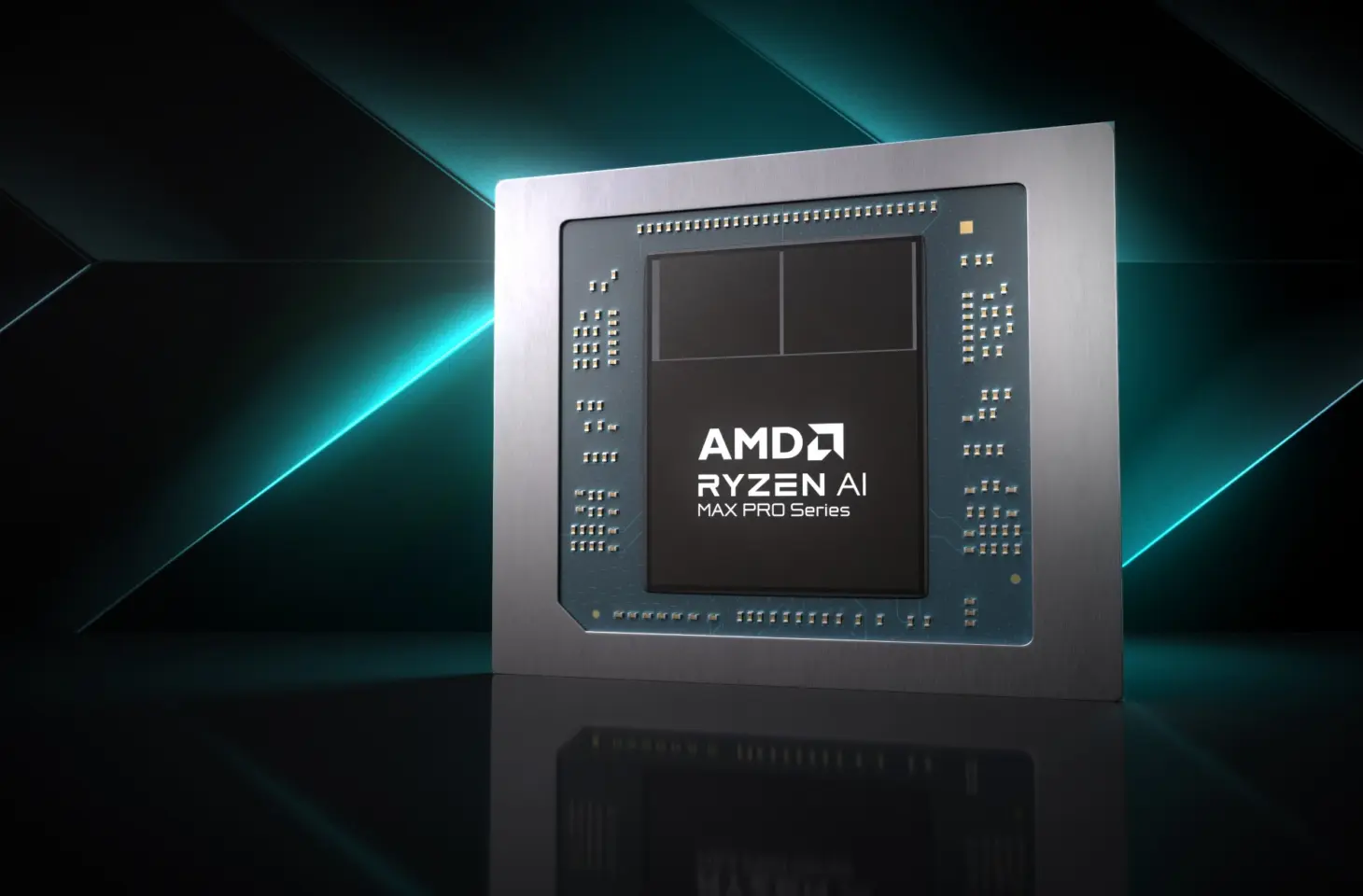AMD is launching a new processor category with Ryzen AI Max. The chips combine CPU cores with a built-in GPU and an immense amount of shared memory.
AMD is working its ass off with the launch of Ryzen AI Max, Max+ and Max Pro. Under that heading, we find new powerful mobile processors that support solid graphics performance.
Hello Halo
AMD previously classified its Ryzen AI 5 and 7 chips under the Advanced label, while the Ryzen AI 9 chips fall under the Premium category. Ryzen AI Max is even more powerful, but since AMD has already started on the top floor, there are no terms left to categorize this chip. Therefore, the manufacturer invents Halo: the superlative of Premium. Apparently.
In this Halo category, AMD is providing four new Max (+) Pro chips, three of which are available in a regular variant. The most powerful of the heap is the AMD Ryzen AI Max + Pro 395, with sixteen cores, 5.1 GHz maximum frequency and 80 MB of cache. Although the type number already makes it clear that this is the most powerful Max chip within the Halo segment, AMD can’t resist adding another plus to the name. The other chips are variants. Only the lightest AMD Ryzen AI Max Pro is not available as a regular non-Pro CPU. To refresh, Pro refers to available management capabilities on the chip, not its performance.
| AMD Ryzen AI | CPU Cores (threads) | GHz (boost) | Cache (MB) | NPU-TOPS | GPU CPUs | TDP (W) |
| Max+ (Pro) 395 | 16 (32) | 5,1 | 80 | 50 | 40 | 45-120 |
| Max (Pro) 390 | 12 (24) | 5,0 | 76 | 50 | 32 | 45-120 |
| Max (Pro) 385 | 8 (16) | 5,0 | 40 | 50 | 32 | 45-120 |
| Max Pro 380 | 6 (12) | 4,6 | 22 | 50 | 16 | 45-120 |
The Max processors all share the same architecture. They combine Zen 5 compute cores with built-in GPUs, with the top model possessing 40 RDNA 3.5 computecores (CUs). So far, nothing new: all laptop chips today contain a CPU and a GPU chip. However, AMD envisions a new memory architecture for the max-processors, with all chiplets accessing the RAM via a 256GB/s interface. The GPU chiplet can claim up to 96 GB of that memory: considerably more than even very high-end discrete graphics cards.


That approach makes the Ryzen AI Max processors fast. For graphics workloads, they outperform the chips that Qualcomm and Intel have in the market today, and depending on benchmarks, they perform similarly or better than Apple’s M4 processors.
Perfect for LLMs
Shared memory is not as fast as, say, GDDR6X memory on a real graphics card, but AMD partly compensates for that by the huge amount of RAM available to the Max chips. One equipped with 128 GB of RAM, as mentioned, can allocate 96 GB to the GPU chip, which is enough to load an LLM with 70 billion parameters.
For AI workloads, available memory is a very important factor. The chip’s built-in graphics component performs 2.2 times better in AMD’s benchmarks than a laptop with Nvidia GeForce RTX 4090 with 24 GB of RAM, and that with a TDP that is 87 percent lower.
AMD decided last year to stick “AI” on every new product it launches, so we should also mention here that the Ryzen AI Max chips, like all other x86 processors, have an on-board NPU. That has 50 TOPS of performance, which is slightly more than what AMD’s competition currently offers. Why anyone should lose sleep over that is not entirely clear even in early 2025. Blurring backgrounds with Teams will presumably be a bit more efficient, and those who want to use a boiled-down version of ChatGPT locally will be able to count on a tad more performance.
New capabilities
However, the CPU, GPU and memory interface are especially important. With Ryzen AI Max, AMD provides a combination of capabilities on one chip that until now have not been available for Windows laptops. That opens the door to new designs, and HP is the first to venture through that door. The manufacturer immediately announced the ZBook Ultra G1a at CES. It looks like an office laptop, but still offers workstation-level performance thanks to its Max processor.
Laptops with the new AMD Ryzen AI Max (Pro) chips will hit the market during the first and second quarters of this year. The added value of the Max architecture will not be the same for every workload. For example, a Max chip will not replace a gaming laptop. For professional purposes, however, this CPU series is promising, although the variable TDP there still implies that you have to evaluate each laptop individually in relation to your needs and expectations.
